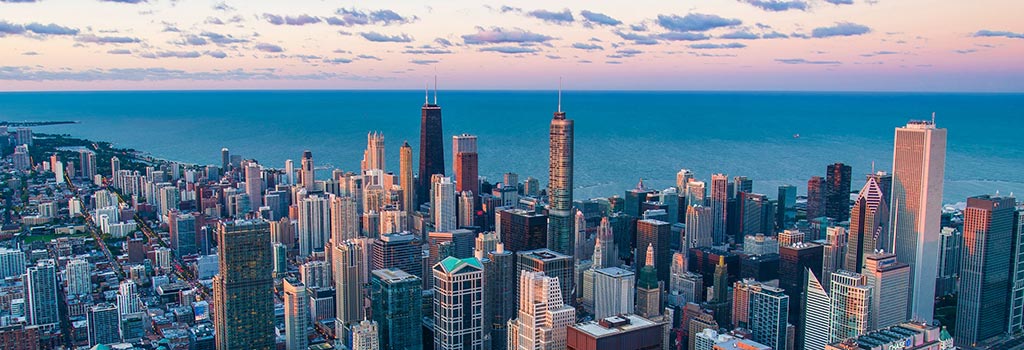Cities are currently facing countless natural or man-made disasters, from earthquakes, fires, mass migration … These types of situations are increasingly frequent due to factors such as rapid urbanization, climate change or political instability.
Resilience is a concept that, in the case of cities, consists of having the capacity to prepare, resist and recover from a crisis in order to protect and improve people’s lives, ensure the benefits of development and drive a positive change.
It provides a strategic framework that includes risk assessment and tools to face these economic, social and environmental challenges in our cities.
“Globally, more people live in urban areas than in rural areas, with 55 % of the world’s population residing in urban areas in 2018. In 1950, 30 % of the world’s population was urban, and by 2050, 68 % of the world’s population is projected to be urban” (https://population.un.org/wup/Publications/Files/WUP2018-KeyFacts.pdf)
The factors that most affect cities are those related to the consequences of climate change. These effects include devastating events such as floods, droughts or forest fires, which have generated catastrophic impacts on our planet. Generating challenges and uncertainties for society, the economy and the environment.
It can affect basic public services, such as the supply of water or energy, essential for the performance of cities. Therefore, as the effects of climate change become more severe and frequent, it is necessary to adopt measures to make cities more resilient, reduce their vulnerability, and thus mitigate these changes and reduce their negative impact.
“70 percent of cities are already dealing with the effects of climate change, and almost all are at risk. For instance, over 90 percent of all urban areas are coastal, which puts most cities across the globe at risk of flooding from sea level rise and powerful storms”.
Climate change is a growing threat! It directly affects the ability of countries to achieve the Sustainable Development Goals and could even reverse the achievements made in recent decades.
The ability of cities to adapt to crisis situations and the threats of climate change is decisive for their sustainability and future.
According to the United Nations Human Settlements Programme (UN-Habitat) (https://unhabitat.org/) To be truly resilient, cities should work towards sustainability to ensure positive long-term impacts, and in the same manner, being truly sustainable entails incorporating resilience to drive and protect development goals.
The time to act is NOW, we need resilient and sustainable cities!
These are some of the proposals by the United Nations to achieve Goal 11 (Sustainable Cities and Communities) by 2030.
- Ensure access for all to adequate, safe and affordable housing and basic services and improve slums.
- Provide access to safe, affordable, accessible and sustainable transportation systems for all by expanding public transportation.
- Increase sustainable urbanization and capacity for participatory, integrated and sustainable planning and management of human settlements in all countries.
- Double efforts to protect cultural and natural heritage
- Minimize deaths from disasters, including those related to water, and those affected by them, and greatly reduce economic losses.
- Reduce the negative environmental impact per capita of cities.
- Provide universal access to green areas and public spaces.
- Increase the number of cities that adopt and implement integrated policies and plans to promote inclusion, efficient use of resources, mitigation of and adaptation to climate change and resilience to disasters.
- Provide support to least developed countries, including through financial and technical assistance, to enable them to build sustainable and resilient buildings using local materials.
Innovation is part of the solution to help cities resist, adapt and quickly recover from crises.
Comprehensive risk management services including monitoring of service and infrastructure networks, simulation models, action protocols and alert systems to find out the state of the city in real time.
Learn about how we work with cities to build urban resilience (http://urbanresiliencehub.org/wp-content/uploads/2018/02/CRPT-Guide.pdf)[/fusion_text][/fusion_builder_column][/fusion_builder_row][/fusion_builder_container][fusion_builder_container type=”flex” hundred_percent=”no” hundred_percent_height=”no” hundred_percent_height_scroll=”no” align_content=”stretch” flex_align_items=”flex-start” flex_justify_content=”flex-start” hundred_percent_height_center_content=”yes” equal_height_columns=”no” container_tag=”div” hide_on_mobile=”small-visibility,medium-visibility,large-visibility” status=”published” spacing_medium=”” spacing_small=”” padding_dimensions_medium=”” padding_dimensions_small=”” border_sizes=”” border_style=”solid” box_shadow=”no” box_shadow_blur=”0″ box_shadow_spread=”0″ gradient_start_color=”” gradient_end_color=”” gradient_start_position=”0″ gradient_end_position=”100″ gradient_type=”linear” radial_direction=”center center” linear_angle=”180″ background_position=”center center” background_repeat=”no-repeat” fade=”no” background_parallax=”none” enable_mobile=”no” parallax_speed=”0.3″ background_blend_mode=”none” video_aspect_ratio=”16:9″ video_loop=”yes” video_mute=”yes” render_logics=”” absolute=”off” absolute_devices=”small,medium,large” sticky=”off” sticky_devices=”small-visibility,medium-visibility,large-visibility” sticky_transition_offset=”0″ scroll_offset=”0″ animation_direction=”left” animation_speed=”0.3″ filter_hue=”0″ filter_saturation=”100″ filter_brightness=”100″ filter_contrast=”100″ filter_invert=”0″ filter_sepia=”0″ filter_opacity=”100″ filter_blur=”0″ filter_hue_hover=”0″ filter_saturation_hover=”100″ filter_brightness_hover=”100″ filter_contrast_hover=”100″ filter_invert_hover=”0″ filter_sepia_hover=”0″ filter_opacity_hover=”100″ filter_blur_hover=”0″][fusion_builder_row][fusion_builder_column type=”1_1″ layout=”1_1″ align_self=”auto” content_layout=”column” align_content=”flex-start” valign_content=”flex-start” content_wrap=”wrap” spacing=”” center_content=”no” link=”” target=”_self” min_height=”” hide_on_mobile=”small-visibility,medium-visibility,large-visibility” sticky_display=”normal,sticky” class=”” id=”” type_medium=”” type_small=”” order_medium=”0″ order_small=”0″ dimension_spacing_medium=”” dimension_spacing_small=”” dimension_spacing=”” dimension_margin_medium=”” dimension_margin_small=”” margin_top=”” margin_bottom=”” padding_medium=”” padding_small=”” padding_top=”” padding_right=”” padding_bottom=”” padding_left=”” hover_type=”none” border_sizes=”” border_color=”” border_style=”solid” border_radius=”” box_shadow=”no” dimension_box_shadow=”” box_shadow_blur=”0″ box_shadow_spread=”0″ box_shadow_color=”” box_shadow_style=”” background_type=”single” gradient_start_color=”” gradient_end_color=”” gradient_start_position=”0″ gradient_end_position=”100″ gradient_type=”linear” radial_direction=”center center” linear_angle=”180″ background_color=”” background_image=”” background_image_id=”” background_position=”left top” background_repeat=”no-repeat” background_blend_mode=”none” render_logics=”” filter_type=”regular” filter_hue=”0″ filter_saturation=”100″ filter_brightness=”100″ filter_contrast=”100″ filter_invert=”0″ filter_sepia=”0″ filter_opacity=”100″ filter_blur=”0″ filter_hue_hover=”0″ filter_saturation_hover=”100″ filter_brightness_hover=”100″ filter_contrast_hover=”100″ filter_invert_hover=”0″ filter_sepia_hover=”0″ filter_opacity_hover=”100″ filter_blur_hover=”0″ animation_type=”” animation_direction=”left” animation_speed=”0.3″ animation_offset=”” last=”true” border_position=”all” first=”true”][fusion_youtube id=”https://www.youtube.com/watch?v=BsacBJpbIPQ” alignment=”center” autoplay=”false” api_params=”” title_attribute=”” hide_on_mobile=”small-visibility,medium-visibility,large-visibility” class=”” css_id=”” /][/fusion_builder_column][/fusion_builder_row][/fusion_builder_container]







